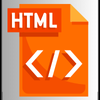CSS is a stylesheet language that controls the visual appearance of web pages. It defines colors, layouts, fonts, spacing, and responsiveness, allowing HTML content to be styled and arranged consistently and efficiently.
What is CSS?
CSS (Cascading Style Sheets) is a stylesheet language used to control the presentation of HTML documents. It defines how elements on a webpage look and are arranged.
Purpose of CSS :
Separation of content and presentation. HTML handles structure and meaning, while CSS handles layout, colors, fonts, spacing, and visual styling.
Consistency across pages. A single CSS file can style multiple web pages, ensuring uniform design.
Improved maintainability. Changes to design can be made in one place without editing every HTML file.
Responsive design. CSS enables layouts that adapt to different screen sizes and devices through media queries, flexible grids, and fluid units.
Enhanced performance. Browsers cache CSS files, reducing repeated downloads and improving load time.
Accessibility and usability. CSS supports readable typography, adaptable layouts, and visual cues that improve user experience.
Advanced visual effects. CSS provides animations, transitions, transformations, shadows, filters, and custom properties, enabling complex designs without images or JavaScript.
CSS Example:
Basic example showing how CSS styles an HTML element.
HTML:
<p class="note">This is a note.</p>
CSS:
.note {
color: blue;
font-size: 18px;
padding: 10px;
background-color: #f0f0f0;
border-radius: 6px;
}
Effect: The paragraph text becomes blue, slightly larger, padded, placed on a light-gray background, and given rounded corners.
Summary:
CSS is essential for controlling the appearance, layout, and responsiveness of web pages while keeping structure and style separate for efficiency and clarity.
FAQ Section:
- What is CSS?
A stylesheet language used to design and layout HTML content. - What does “Cascading” mean in CSS?
Styles are applied based on priority rules: inline > internal > external, with later rules overriding earlier ones. - What are the types of CSS?
Inline, internal, and external. - What is a CSS selector?
A pattern used to target HTML elements for styling. - What is the box model?
A layout concept consisting of content, padding, border, and margin. - What are classes and IDs?
Classes style multiple elements; IDs uniquely identify and style one element. - What are pseudo-classes?
Special states of elements, such as:hoveror:active. - How do media queries work?
They apply styles based on device conditions like screen size. - What is specificity?
A scoring system determining which CSS rule takes precedence. - Why use external CSS?
It keeps design separate, reusable, and easier to maintain across pages.
Other Courses:



